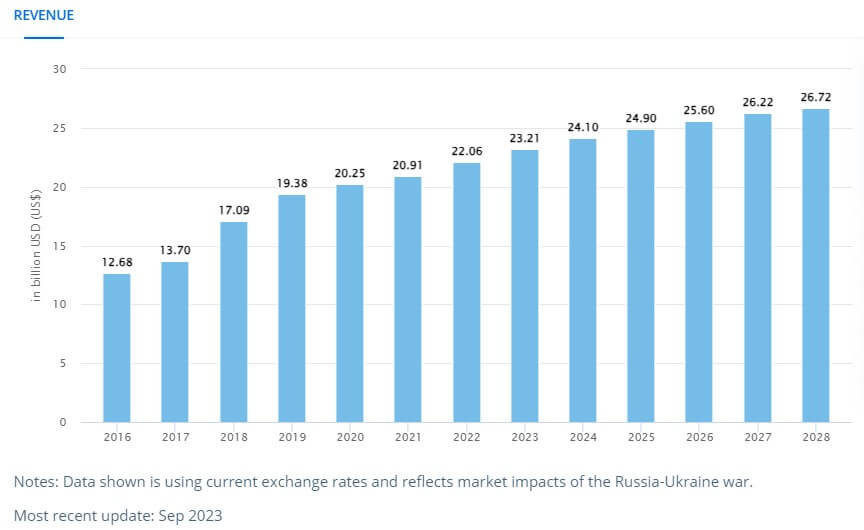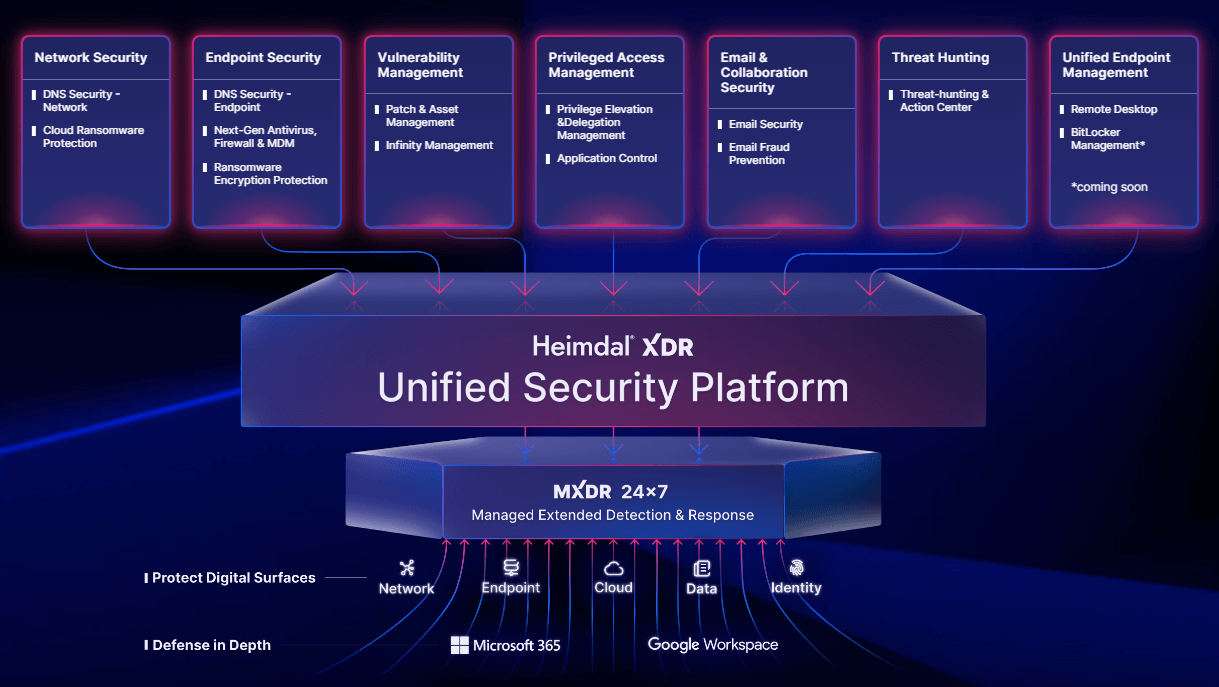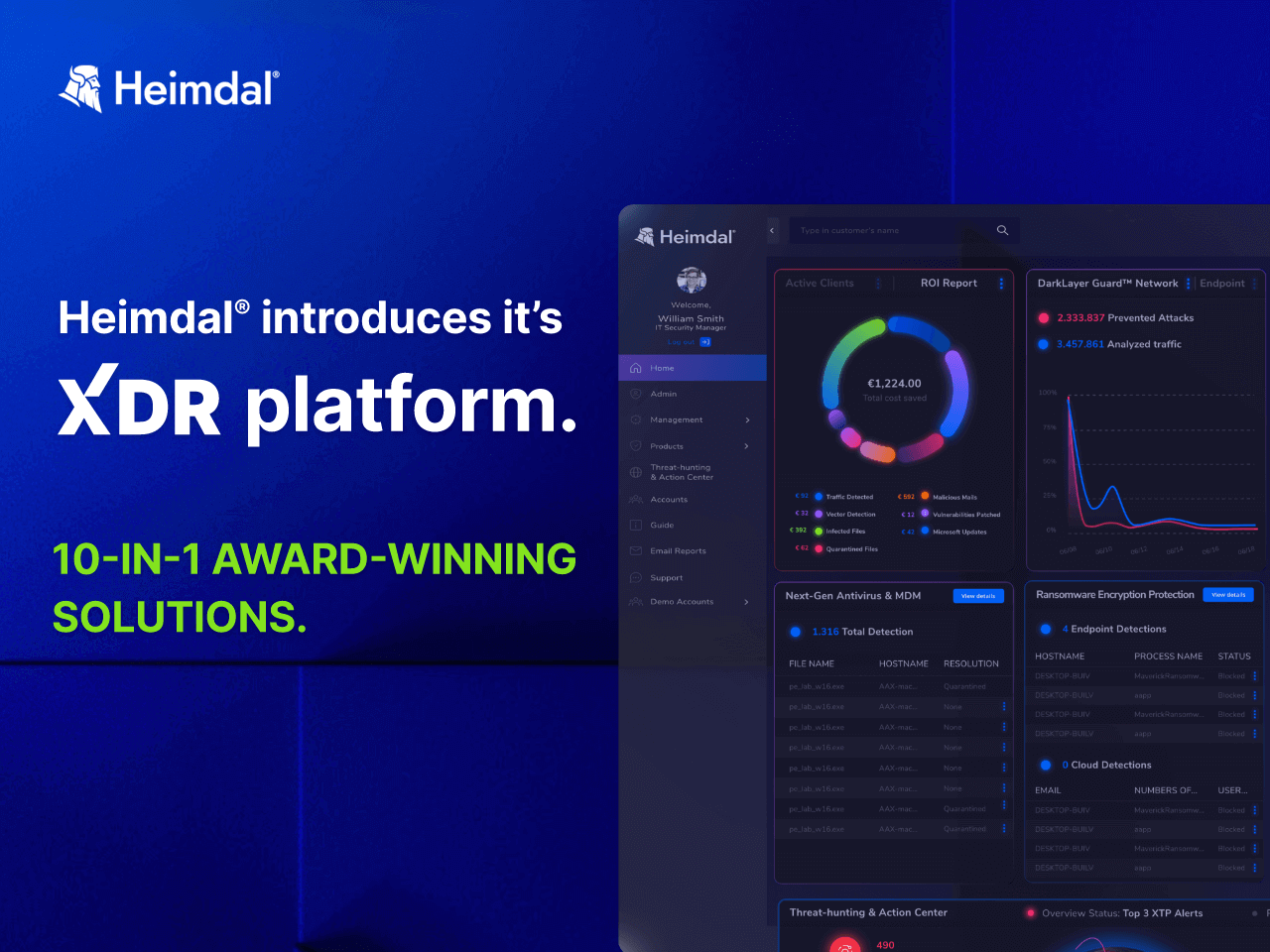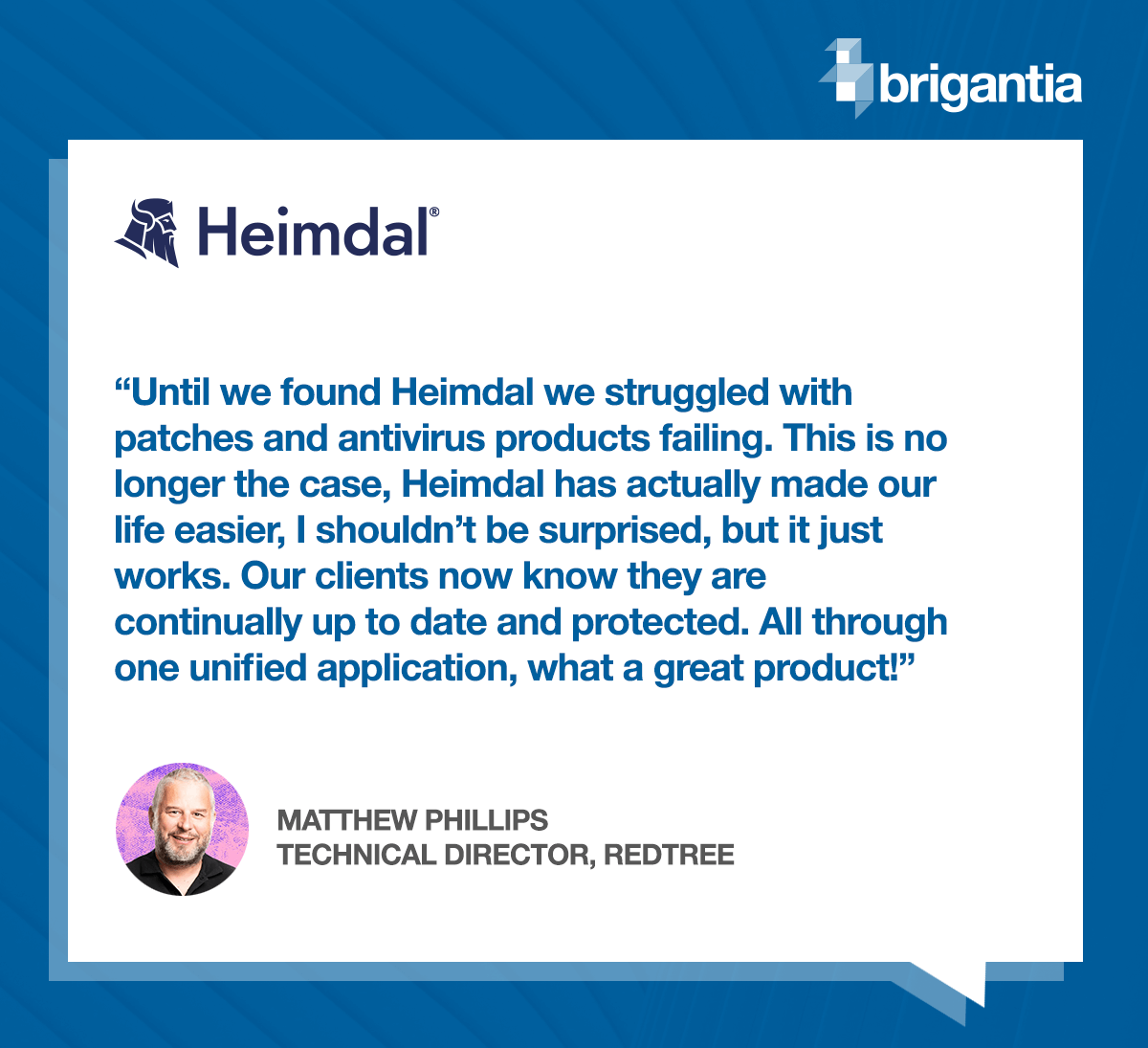Contents:
MSPs have carved their way into the business environment by offering a unique value proposition: by managing a wide range of IT services, they allow their clients to subscribe to a worry-free, monthly fee model.
This approach has proven successful because it allows businesses to outsource their IT needs, allowing them to focus on what they do best.
But if you’re in the MSP business, then you know that it’s not always easy to keep up with an ever-changing market. You’re even faced with a paradox: on one hand, the MSP market is booming, but on the other, this boom brings with it a set of challenges.
How can you stay on top of the intense competition, growing cyber security threats, and rapid technological advances?
Read on to learn more about:
- MSP market overview
- The paradox: MSP challenges
- From challenge to opportunity: 12 Best Practices for MSPs
- What can Heimdal® do for you
MSP Market Overview
The industry is rapidly growing
The MSP market is witnessing substantial growth. In 2024, the market revenue is projected to hit US$24.10 billion.
This expansion will continue, with an expected compound annual growth rate (CAGR) of 2.61%. This will result in a market volume of US$26.72 billion by 2028 (Statista).
This upward trend is excellent news for you. As this momentum goes on, companies will continue to rely on MSPs for IT management.

MSP market growth trend 2016-2028 (Statista)
90% of Fortune 1000 use MSPs
According to MSPAlliance, there are about 150,000 MSPs operating around the world, with about 40,000 operating only in the United States.
MSPs offer a wide variety of IT services to companies of all sizes. According to some estimates, almost ninety percent of Fortune 1000 organizations rely on managed service providers for some or all of their information technology needs.
This shows a significant trust and reliance on MSPs by some of the world’s largest and most influential companies. And it indicates a strong and stable demand for MSP services.
Strategic MSPs are on the rise
MSP usually focus on key services such as data center, network, mobility, infrastructure, backup and recovery, communication, and security management.
However, according to CIO Magazine, many MSPs started to offer services supporting long-term business strategies, such as digital transformation consulting, compliance audits, and technology roadmaps. Additionally, the rise of IoT presents a significant revenue opportunity, with 50% of MSPs recognizing its potential.
In short, if you’re in the MSP business, you’re here to stay. But that doesn’t mean there won’t be any challenges.
MSP challenges
The very factors driving the growth of MSPs – a heightened reliance on technology and the need for specialized IT services – are also the sources of their most significant challenges.
You may be familiar with the following problems:
- keeping up with an ever-changing market
- navigating a threat landscape in flux
- competing in a fragmented industry
- the challenge of continuous education
One of the most significant pain points for MSPs in today’s market is the daunting task of keeping pace with an ever-changing technological and threat landscape.
The fragmented nature of the sector, where numerous vendors are vying for the same space, makes this challenge much more difficult.
This intense competition and rapid evolution make it increasingly difficult for MSPs to stay up-to-date, continuously educate themselves, and consequently, sell their services compellingly and effectively.
Navigating these complexities is a key challenge that MSPs must address to remain relevant and successful in this dynamic environment.
Clelia Di Maio, Customer Success Team Lead @ Heimdal, UK
The good news is you can navigate this environment with a little bit of innovation, agility, and strategic vision.
12 Best Practices for MSPs
The key to not just surviving but thriving in this industry lies in adopting best practices that turn the challenges above into opportunities.
With the right strategies, MSPs can differentiate themselves, elevate their service offerings, and become indispensable partners to their clients. Here are some practices you can try:
1. Embrace agile learning & innovation
You should be open to learning and coming up with new ideas to keep up with how quickly IT is changing.
This involves staying abreast of emerging technologies and rapidly integrating them into service offerings.
Use online training, webinars, and industry conferences to stay on top of things and encourage your team to learn new things all the time.
2. Foster strong client relationships
Your clients are your greatest ambassadors. Engage with them regularly, understand their specific needs, and customize your services to fit their unique business landscapes.
Be a partner rather than an enforcer. Learn to listen so that you can offer clients the right arguments and get them to understand and back up your strategy.
3. Prioritize security compliance
Staying ahead in cybersecurity means keeping up with the latest regulations.
Ensure your services comply with standards like GDPR, HIPAA, or any industry-specific requirements. Regular audits and certifications like ISO 27001 can bolster your credibility and trust.
4. Implement proactive security and continuous monitoring
Don’t just react to issues; anticipate them. MSPs must prioritize advanced cybersecurity measures and the best ones are proactive.
Conducting frequent vulnerability assessments is a good practice to stay ahead of threats. You can use monitoring tools and proactive cybersecurity solutions to identify and mitigate vulnerabilities before they escalate.
5. Adopt a multi-layered security approach
One size doesn’t fit all in cybersecurity.
Adopt a multi-layered security strategy that includes DNS security, next-gen antivirus, firewall, mobile device management, ransomware encryption protection, vulnerability management, privileged access management, and application control to provide comprehensive protection.
6. Maintain strong backup and recovery plans
Data loss can be disastrous for any business. Having strong backup and disaster recovery plans is a must.
A solid plan should include regular, secure backups of critical data, a clear recovery process, and periodic testing to ensure quick and reliable restoration in case of data loss or system failure.
7. Embrace automation
Automation is a game-changer in MSP operations, so don’t hesitate to use it. It does wonders for repetitive tasks, it can help you analyze large amounts of data, and it saves costs.
With the right balance of automation and human touch, you’ll increase efficiency without compromising quality.
Automated security solutions can monitor networks 24/7, perform regular security audits, apply patches, and respond to threats more quickly than manual processes, significantly strengthening the security posture.

8. Differentiate through specialization and personalized services
To stand out in a fragmented industry, MSPs should focus on developing areas of specialization.
This could be industry-specific solutions, bespoke service packages, or advanced technology offerings.
Here are the leading services and solutions provided by MSPs, according to Vanson Bourne’s research (via CIO magazine):
- Security operations center (SOC): 35%
- Cloud-based applications: 35%
- Managed detection and response (MDR): 34%
- Extended detection and response (XDR): 32%
- Backup, business continuity, and disaster recovery: 32%
- Network security: 31%
- Cloud-based infrastructure: 31%
- Business applications: 30%
- Productivity applications: 29%
- Network monitoring and management: 29%
Personalizing services to meet the unique needs of each client can significantly enhance your value proposition and set you apart from competitors.
9. Invest in knowledge management and effective communication
Continuous education is key to staying relevant. Invest in a knowledge management system that allows easy access to the latest information and best practices.
Train your team in effective communication skills to ensure they can articulate the value of your services clearly and compellingly to clients.
This approach not only enhances internal expertise but also boosts client confidence and trust in your services.
10. Consolidate tools
Most of the time, MSPs use more than one tool for different tasks. When these tools can be merged, it can reduce costs and simplify the work of your team.
This consolidation might involve choosing multi-functional platforms that can handle several tasks like monitoring, management, and reporting in one interface.
11. Include cloud services
With the increasing adoption of cloud services, MSPs need to make these services a key part of their offerings.
This includes not just providing cloud storage solutions but also managing cloud-based applications and infrastructure. Being adept in cloud services allows you to offer scalable, flexible solutions that are in high demand.
12. Choose a unified management platform
A unified management platform can streamline various MSP tasks. Ideally, this platform should integrate different parts of MSP services, like remote system management, automated business tasks, security, and data backup, ensuring complete control over client IT systems.
A unified platform can increase visibility across operations and improve service delivery efficiency. Luckily, in terms of security, we have just the right tool for you.
Here’s what Heimdal® can do for you:
When it comes to top-notch security, Heimdal’s XDR platform is just what you need. It brings together a suite of cloud-based solutions designed to protect your business from emerging cyber threats.
By choosing us, you can streamline your operations through an easy-to-navigate platform, making it simpler for your team to manage and monitor IT security services efficiently. You’ll gain:
- access to the widest offering in the market, enabling you to provide comprehensive security solutions to your clients, addressing a diverse range of cybersecurity needs;
- fast and reliable support, ensuring quick issue resolution and maintaining client trust;
- competitive pricing, so that you can offer high-quality, cost-effective security services, appealing to budget-conscious clients.
- access to a user-friendly, unified platform, that makes it easier for your team to manage and monitor the security needs of your clients.

If I’ve made you curious, don’t hesitate and book a demo to experience Heimdal XDR firsthand.
Wrapping up
As an MSP in ever-growing industry, it may often feel like walking a tightrope – exciting yet challenging. But by getting a good grip on market trends, embracing the complexities, and sticking to the best practices, you’ll not only keep your balance but also stride confidently forward.
If you liked this article, make sure you also check out:
- What Is a Managed Security Service Provider (MSSP)?
- Managed Security Service Providers (MSSPs) on the Rise. A Vendor’s View on Current Landscape & Future Trends
- XDR Security for MSSPs
FAQs
Why outsource your operations to an MSP?
Managed services offer businesses a predictable IT operational model. By maintaining systems regularly and forecasting IT expenses, MSPs help businesses plan better for future growth and avoid sudden IT-related financial shocks.
What should an MSP technology stack include?
An MSP’s technology stack should include Remote Monitoring and Management (RMM), Professional Services Automation (PSA), cybersecurity solutions, Backup and Disaster Recovery (BDR), network management tools, cloud management software, compliance management, endpoint management, documentation management, service desk, analytics and reporting, identity and access management, and communication and collaboration tools.
How do MSPs differ from other IT service models?
An MSP differs from an internal IT team in its scope and approach. While internal IT teams handle everyday operations, MSPs offer additional support and specialized services, such as cloud computing and cybersecurity, often more cost-effectively.
Contrary to traditional IT services, MSPs provide scalable and “always-on” services, adapting to varying business needs.
What’s the difference between MSSP and MSPs?
While MSPs provide a wide range of IT services, including cybersecurity, Managed Security Service Providers (MSSPs) only provide cybersecurity services.
If you liked this piece, follow us on LinkedIn, Twitter, Facebook, and YouTube for more cybersecurity news and topics.


 Network Security
Network Security
 Vulnerability Management
Vulnerability Management
 Privileged Access Management
Privileged Access Management
 Endpoint Security
Endpoint Security
 Threat Hunting
Threat Hunting
 Unified Endpoint Management
Unified Endpoint Management
 Email & Collaboration Security
Email & Collaboration Security











